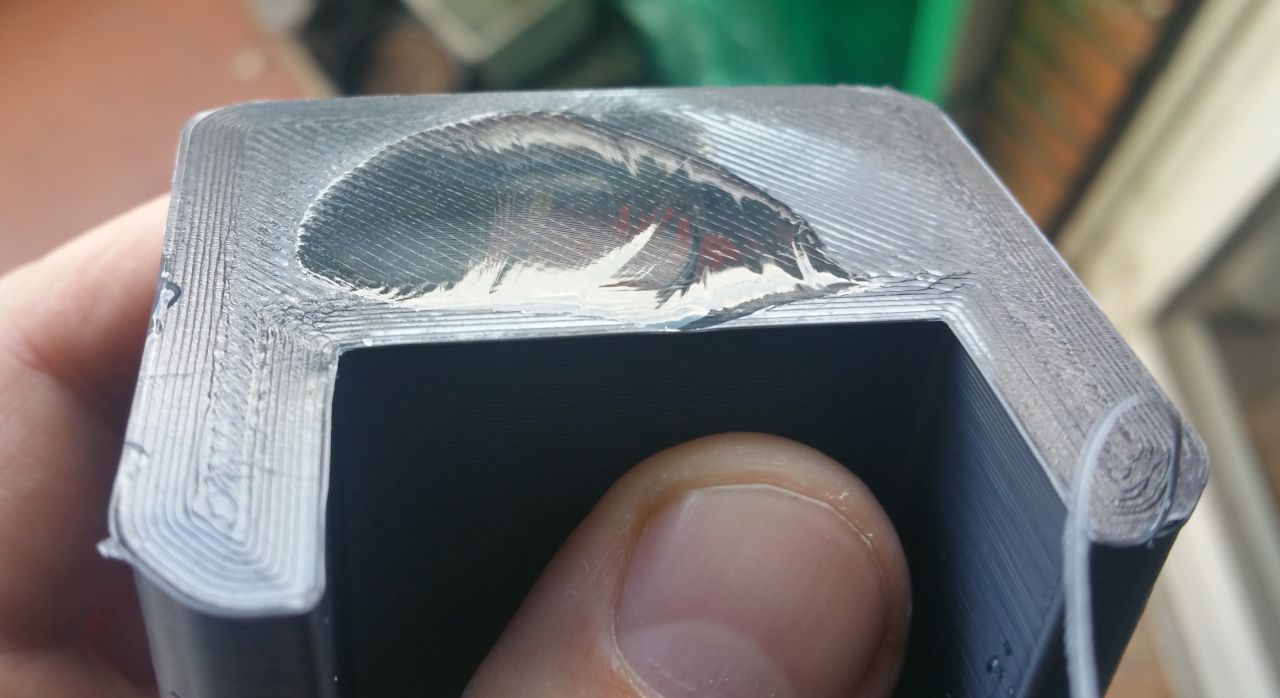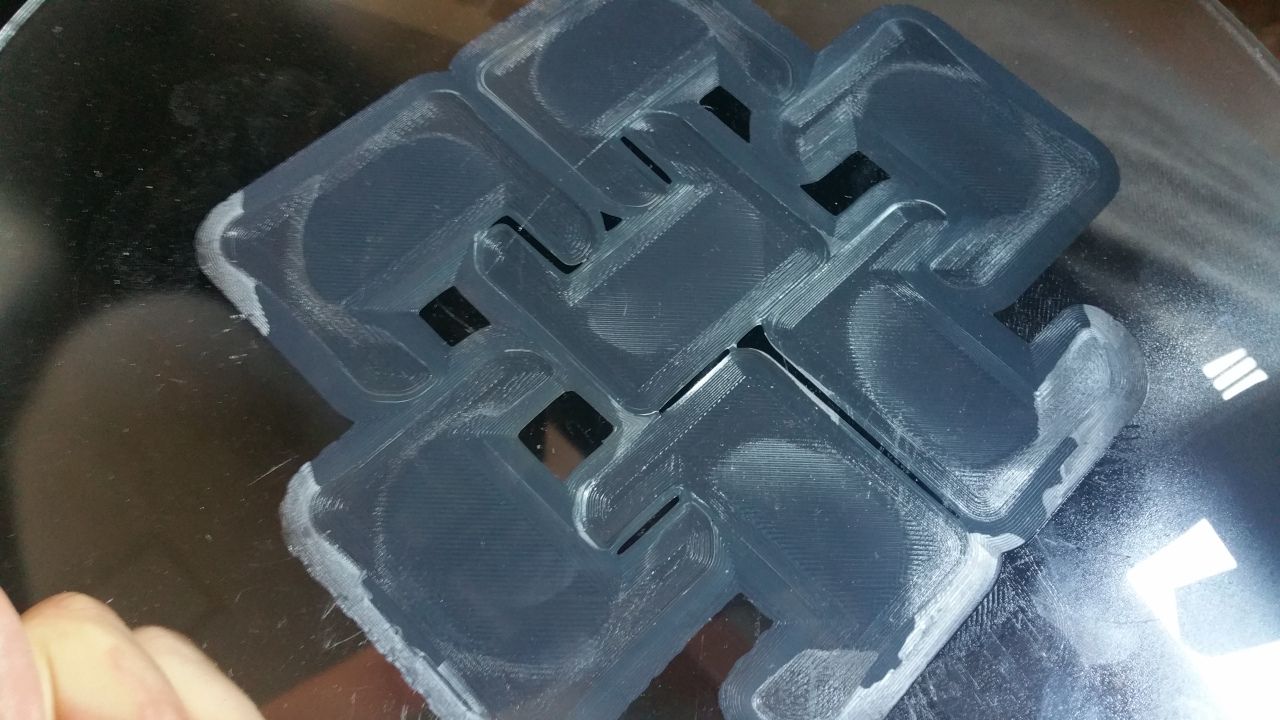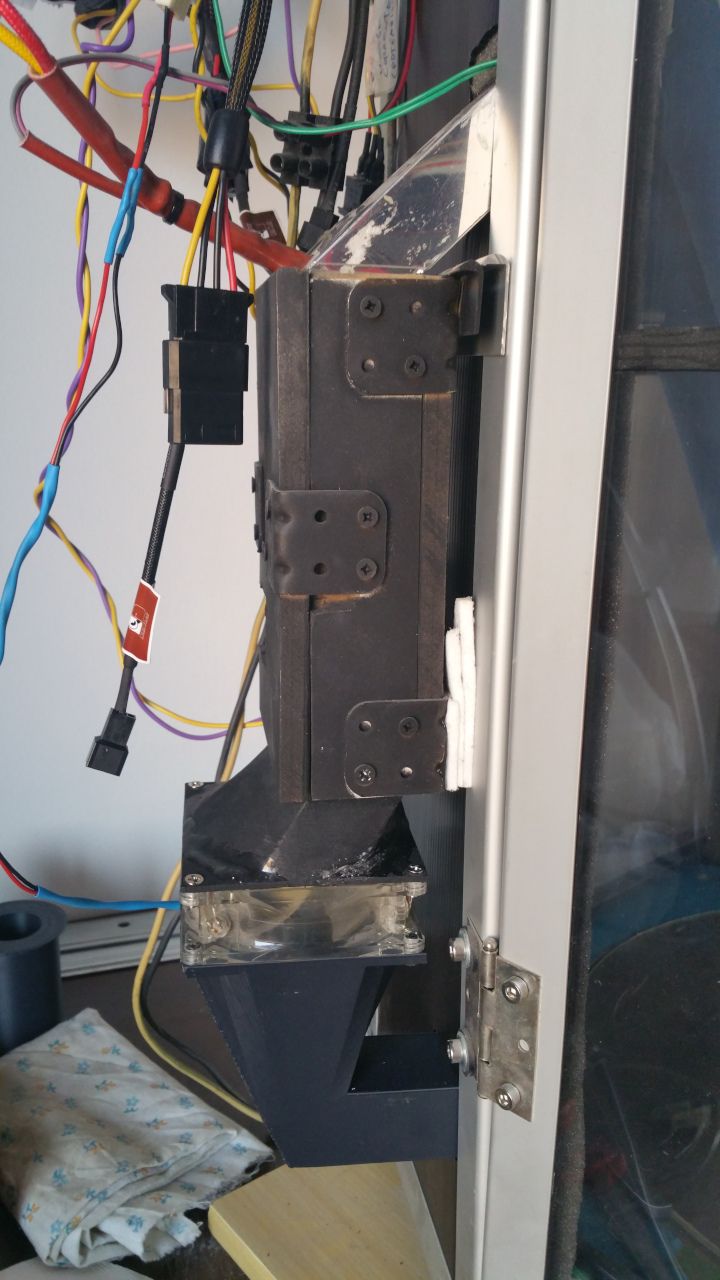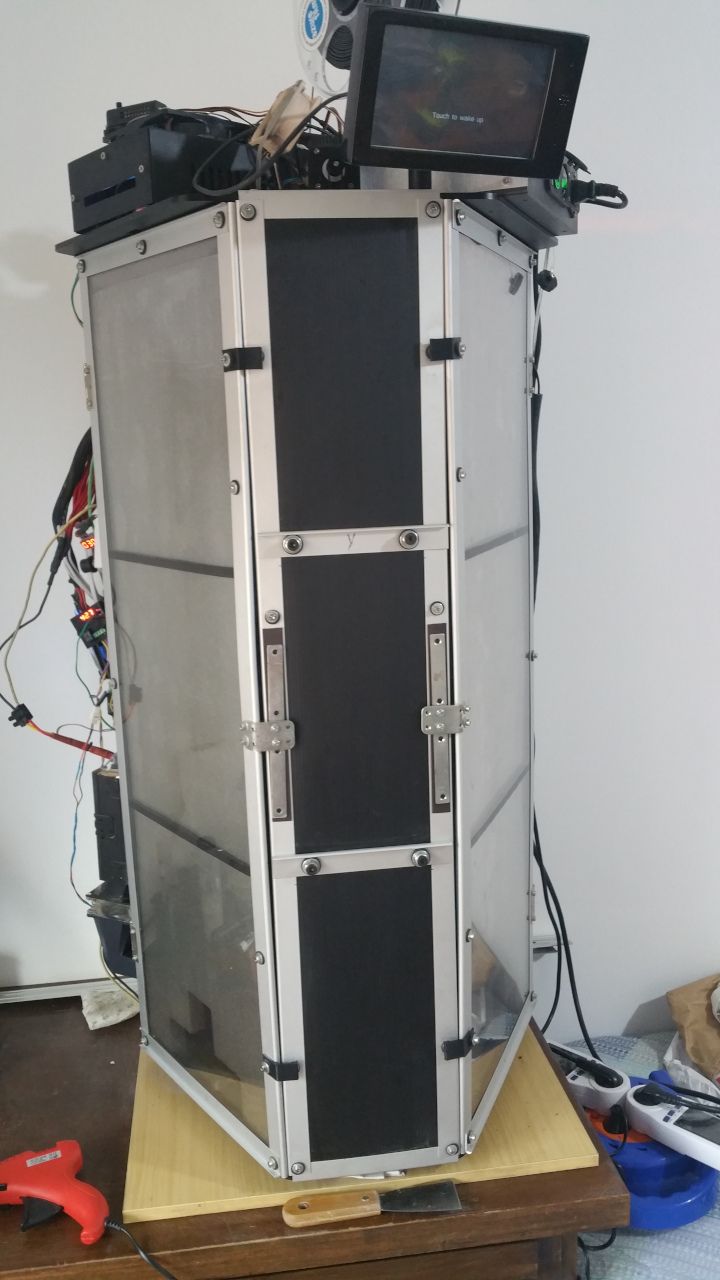broken glass for too strong adesion but still warping
-
Hi there !
This is fun and I have to figure it out.
I'm printing with a heated glass to 110 degree as suggested for the ABS/ASA material.
For stick the part I'm using the extra strong air spray and I have to say work really well , is water soluble so I can remove it after lots of application.
Now , what is happened is strange (to me at least).
Around the net I read several time to let part cool down by it self at the end of the print for avoid warping or deformation because the material contraction.
Fine I followed the suggestion.
Two different issue come here...
After a print of 17 hours I let the pieces cool down slowly as usual . When the glass reached the ambient temp I tried to remove the part and tadaaaaa , the glass come with the part also.

Plus , the 50 degree of the hot chamber wasn't enough to guarantee to avoid the warping. The fan speed was at 10% just for avoid mushy parts but I could try to deactivate it at all if necessary.

Differently from the other prints in this case I just applied a really thin layer of glue for leave the bed more flat possible, so I can image that I have to use more spray so that the glue will yield and not the glass.
It was awesome, the part of glass stuck to the plastic was part of it! I had to sand it away.
The block were 6cm eight for 5 cm large and deep. 6 wall and 30% infill (must be solid). The overall print was good but this problem of warping is still a nightmare.
In a guide for print the polycarbonate I read that If I don't use product specific that at low temperature detach them self I need to remove the part when the glass is hot , is this true?
https://www.3dprintingsolutions.com.au/News/Australia/how-to-3d-print-polycarbonate-pc-filament
I read on this forum that the ABS need at least 70 degree right? Is this temp enough for avoid warping?
And in my case the warping happened during the print , not after. The top surface is absolutely flat.
I can try to rise the internal temp improving the hot air flow and insulating better the structure and the bars.
Your experiences/suggestions? -
@giostark, what you are experiencing is unfortunately not unusual. In a lot of cases you have to get your bed temperatures and first layer squish 'just right' and even then you might need to design your part with warping in mind.
Printing PETG, on plain glass, I have taken plenty of chunks out of the glass. The balance of temperature and first layer squish is so delicate that a 5C difference in bed temperature can be the difference between the part just 'falling off' and it taking a chunk of glass with it.
I am printing a lot of ABS parts at the moment and I can not avoid shrinkage artifacts but what I can do is to choose which surface will have the artifacts and make sure it is a surface that is non-critical.
Some of the things you can do in order to reduce artifacts are as follows:
In your second picture you show many gaps between footprints of models. All these gaps are starting point for shrinkage. Expand the brim so that all the parts form a solid base together and you will only have shrinkage on the outside edges. The other things I do on occasion is to design the brim into the model instead of generating it with the slicer. Cura does not allow for multiple layers of brim making that brim quite weak. If I design the brim into the model I can give it multiple layers and stronger. Sometimes increasing the first layer thickness can improve the brim strength.
You can also print ridiculously strong brims but not all the way to the actual part. Let's say you design a 3 layer brim around the part. This would be a real pain to remove from the part after printing. What you can do is only have the first layer actually reach the part and on layer 2 and 3 you have a single line width of empty space between brim and part. This gives you a much stronger brim but it is still easily cleaned up.
It boils down to trying different things until you hit a combination that works for you. -
@jens55
Thanks for the long answer .
About the cool down ,what is your practice? I mean , the procedure for remove the part.
A fix temperature or still 110 degree or maybe try at cold , with the glass passed some time in a fridge?
I'm open at several attempts , are years that I'm learning stuffs on 3D printing but I'm still really far from a good point. -
@giostark, the vast majority of my prints come off the bed when the temperature is below 60C for ABS. Sometimes I get impatient and can't wait but at a minimum I wait until about 90C or lower. I usually slide a razor blade under an edge if the bed is still hot. At below 60C the part is generally no longer attached to the glass and I can just pick it up off the glass (no chemicals on the glass, just plain glass)
A lot of prints are started at night and the parts are done and cold in he morning.I should point out that for printing on glass directly, the glass needs to be perfectly clean. A fingerprint or residue of any kind (even things like alcohol) will cause issues.
I use a white powdered cleaner (have to look up the name) with water. The water needs to sheet off the glass !
Edit: Bon Ami is the cleaner
-
@jens55
ok , I have some point where to work on.
I'll start to refine the insulation of the printer for rise the temperature and then try a different adhesion .
Such a tricky trap all this 3D printing world
-
@giostark, My printer has a chamber temperature around 50 as well and I use a 110C bed so both those are in the ballpark
-
@jens55
thanks for your time
Mmmm...soon I'll open a 3d about my insulation and how I tried to uniform the temp of the circular glass ... It was fun but a little complicate found a working solution.
Now I'm on FreeCAD re-drawing a new fan setup for install a powerful fan in the air mechanism.(now is a 80mm x 25mm with low performance that will be replaced with a 120mm x25mm with mid performance fan that could be replaced again with a hight performance one if not enough). Actually I reach 50 degree using 1/3 of the power of the fan resistor. I hope to reach at least 60-70 degree at full regime.
I'll need also help for some coding in the automatic regulation of the chamber but I'll post there all the stuffs
-
@giostark, I think you might have just revealed the clue about your problem .... a fan. ABS is not happy about being printed in moving air.
I get my chamber temperature simply from the heat of the build plate. -
@jens55
My printer is 1m tall and the air come from the middle to the high direction in a diagonal of 45 degree. The square where come from the air is 4cm x 4cm. But the air is really hot (the resistor is now at 110 degree). Maybe the culprit is the 10% of the part fan that I leave always on that must be turned off?
I read everywhere that if is totally off the fan generate problems for the overhangs and in general the part come a little distorted.
But in my case I could have disable because the part didn't had overhang at all...
I have some more test to do ! Soon as I finished I open that 3d for make all the situation more clear.
I suspect that 10% of the turbofan on big parts is not good.


-
@giostark After a lot of mixed success and failures with ABS and ASA printing I tried FormFutura's Titan X ABS filament. It promised good first layers and no warping and, for me, it delivered both. More expensive (here in Aus) than most ABS filaments but, for me, well worth.
-
@mjlew
Thanks for you suggestion I'll make a new try with the black roll I still have.
In the past I used the ApolloX (ASA) from FomFutura. I have still a new roll to try. I remember that it had less warping but still present. (less than standard ABS for sure but still present). Now I'm using an ASA from the Azure Film and I didn't have idea if is good or not. (it was cheap I bought 4 roll at that time). I have still 4 rolls of this but white color. Could be the next attempt change the filament. I'll buy some new black rolls from FormFutura.edit: ordered 3 roll of apolloX black
-
I used to use abs juice for adhesion and got same problem switched to magikgoo and now piece pop out when the bed is cold
-
@giostark said in broken glass for too strong adesion but still warping:
@jens55
Maybe the culprit is the 10% of the part fan that I leave always on that must be turned off?Turn it off for the first layer !
-
I have printed a LOT of ABS in a 50C chamber without warping. The chamber heater has a low flow fan just to ensure that the air circulates over the heater and well away from the print. It's a corexy printer so the heater is at the bottom of the chamber, far from the print- it might be hard to do that in a delta. I think you want to avoid a lot of air movement at 50C. If you could heat the chamber to the glass transition temperature of the ABS it might be OK to have more air flow, but that's going to require a lot of special work to enable the chamber to get that warm and not ruin other parts of the printer.
I use a PEI bed surface and don't have any problems getting ABS prints to stick or to let go. It works for PLA, TPU, and PETG, too.
You can buy/make glass that has artistic chips in it- do a search for "glue chip glass". It's an old, well known technique for chipping the surface of glass that the 3D printing world seems to have forgotten about.
-
You may find this video useful
Large diameter nozzle, high print temperature, slow printing, and draft shield.
-
FYI, I use 250C for nozzle temperature.
-
@jens55
Yep , I usually print the first 3 layer without the 10% ... (fan totally off).
@mrehorstdmd
Ok understood.
@zapta
Thanks for the link I'm looking it.
@Dad003
I could give it a try. But I the list I have to settle other stuff first.Thanks to all for the contribution !